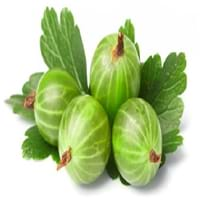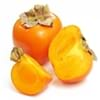Health Benefits
Boosts immune system, Boosts respiratory health, Cancer prevention, Digestive aid, Piles treatment
Arthritis prevention, Cancer prevention, Liver health, Scurvy treatment, Ulcer prevention
General Benefits
Beneficial in improving nerve function, Protects against parasites and worms, Relieves pain
Boosts immune system, Digestive aid, Eye care, Fights against infections, Improves blood circulation, Maintains healthy cholesterol level, Sore throat treatment, Treatment of common cold
Skin Benefits
Anti-aging benefits, Brightens and lightens complexion, Exfoliates skin, Hydrates skin, Treatment of dark spots
Anti-aging benefits, Brightens and lightens complexion, Reduces wrinkles, Treatment of acne
Hair Benefits
Prevents hair loss
Prevents hair loss, Promotes longer and healthier hair, Treatment of dandruff
Allergy Symptoms
Abdominal pains, Breathing difficulty, Dizziness, Eczema, Fainting, Hives, Itching, Nasal congestion, Swelling of face, Tingling sensation in mouth, Vomiting
Constipation, Diarrhea, Drop in blood pressure, Eczema, Facial swelling, Hives, Hoarseness, Itching, Itchy eyes, Nausea, Red rash, Redness of eyes, Runny nose, Sore eyes, Swelling of mouth, tongue or lips, Tingling sensation in mouth, Vomiting
Side Effects
Decrease in blood sugar levels, Induces acid reflux, Allergic reaction, Tooth decay, May form gallstones
Gastric irritation
Best Time to Eat
Along with meal, As a snack in the late afternoon, Don't consume at night and before bed, Strictly avoid empty stomach
Best if taken as a breakfast (or empty stomach), As a snack in the late afternoon, Don't consume at night and before bed, Morning time (before lunch)
Vitamin B5 (Pantothenic Acid)
Vitamin C (Ascorbic Acid)
Vitamin K (Phyllochinone)
Not Available
Lutein+Zeaxanthin
Not Available
Calories in Fresh Fruit with Peel
Not Available
Calories in Fresh Fruit without Peel
Not Available
Calories in Frozen Form
Not Available
Calories in Dried Form
Not Available
Calories in Canned Form
Not Available
Type
Tropical
Berry, Tree fruit
Season
Spring, Summer
Summer
Varieties
PKM 1, Urigam, Hasanur, Tumkur prathisthan, DTS 1 and Yogeshwari
Whinham's Industry, Green Hansa, Clark, Chataqua, Invicta, Keepsake, Lepaa Red, May Duke and Whitesmith
Color
Brown, Reddish-brown
Green, Purple, Red, Yellow
Inside Color
Brown
Yellowish Green
Shape
Curving Cylinder
Round
Taste
Sour-Sweet
Astringent
Origin
Africa
Africa, Europe, South-West Asia
Soil Type
Loam, Sandy, Sandy loam, Well-drained
Loamy, Well-drained
Climatic Conditions
Humid to dry, Rainfall, Warm to hot climate
Dry, Warm
Facts about
- Tamarind is used to prevent body odor.
- African children use the tamarind seeds in games.
- No cases of tamarind toxicity or allergy reported till date.
- Traditionally, kids were told that babies were found under gooseberry bushes.
- They are also called 'fayberries' due to an ancient belief that fairies hid in gooseberry bushes to avoid danger.
Top Producer
India
Germany
Other Countries
Africa, Australia, Brazil, China, Mexico, Nigeria, Sudan, Taiwan
Austria, Czech Republic, Denmark, Hungary, Lithuania, Poland, Russia, Ukraine, United Kingdom
Top Importer
United States of America
Not Available
Top Exporter
Thailand
Not Available
Botanical Name
Tamarindus indica
Ribes uva-crispa
Synonym
Tamarindo, tamarindus
Ribes grossularia
Subkingdom
Tracheobionta
Tracheobionta
Division
Magnoliophyta
Magnoliophyta
Class
Liliopsida
Magnoliopsida
Subclass
Rosidae
Dillenhidae
Order
Fabales
Saxifragales
Family
Fabaceae
Grossulariaceae
Species
Tamarindus indica
R. uva-crispa
Generic Group
Tamarind Sub
Saxifrage
Difference Between Tamarind and Gooseberry
We might think that Tamarind and Gooseberry are similar with respect to nutritional value and health benefits. But the nutrient content of both fruits is different. Tamarind and Gooseberry Facts such as their taste, shape, color, and size are also distinct. The difference between Tamarind and Gooseberry is explained here.
The amount of calories in 100 gm of fresh Tamarind and Gooseberry with peel is Not Available and 44.00 kcal and the amount of calories without peel is 239.00 kcal and Not Available respectively. Thus, Tamarind and Gooseberry belong to High Calorie Fruits and Low Calorie Fruits category.These fruits might or might not differ with respect to their scientific classification. The order of Tamarind and Gooseberry is Fabales and Saxifragales respectively. Tamarind belongs to Fabaceae family and Gooseberry belongs to Grossulariaceae family. Tamarind belongs to Tamarindus genus of Tamarindus indica species and Gooseberry belongs to Ribes genus of R. uva-crispa species. Beings plants, both fruits belong to Plantae Kingdom.









